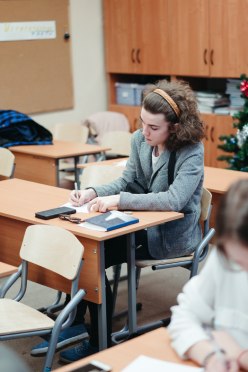






Study in USA
GDP
2.87 lakh
Population
331 Million
Language
English
Capital
Washington DC
Currency
US Dollar
Temperature
-7 to 32 °C
- Why Study in USA
- Accommodation
- Student Visa Process
- Post Admission
- Top Universities
- Top Courses
- FAQ
Why Study in USA
The United States of America (USA) dominates the world by being the most popular university destination for international students. American universities are well-known for providing high-quality teaching and research. Being the largest destination for international students seeking higher education, the education system of the USA is the most versatile and highly flexible as compared to other parts of the world. The country is renowned for giving the best exposure to a variety of customs, traditions, festivals, cuisines, and art. Some of the known facts that amplify the probabilities of choosing USA as the best study destination are as below.
- Out of 20 universities listed in QS World University Rankings, 10 are from USA
- Support your living cost by working part-time for up to 20 hours per week with an F1 Visa
- Avail the benefit of staying till 36 months on a post-study work visa soon after graduation
- Get the opportunity to work with the top brands like IBM, Google, Infosys, Cognizant, Capgemini, etc. on a post-study visa
- Abundant scholarship programs for international students

The universities of the USA offer a wide range of courses that can be availed by international students. This not only benefits the student to select the desired course, but also the structure and curriculum. As an undergraduate student at any university, you get the highest level of opportunity to explore your subject interest and then finally decide your specialization. The USA universities are well acquainted with the challenges confronted by international students. To lessen their stress burden and to boost their morale, the universities conduct regular orientation programs, workshops, and training to offer assistance.
Besides, growing amidst cultural diversity will provide students with strong personality traits and adequate skills that are valued in the international market. These USA institutions consistently remain the top leaders in introducing the latest technologies and trends in academic methods across the globe. Eventually, this sums up to give excellent academic growth to the students helping them to grasp the practical aspects of their selected discipline. Further, these teaching techniques will boost the employability ratios soon after they graduate. Every year, USA hosts a countless number of international students in the world.
Accommodation (Cost of living expenses)
The cost of living in USA is much higher in comparison to other study abroad destinations like New Zealand, Canada, and Australia. However, the universities and private financial institutions of USA offer study loans of up to 100% on the tuition fees and for the cost of living. These loans come with flexible features such as they can be paid back in installments after the completion of the students’ education. To add upon, the students are offered the facility to repay the loan within the span of 30 years. The payback period begins from 6 months post-graduation. Those students who have enrolled in the STEM programs need to usually pay back the loans in the next 5 years. International students choose to study in USA because the country is the center hub giving multiple work opportunities with handsome pay-packages.
International students must remain quite alert and cautious in their daily spendings. They must be aware of various solutions to gaining a return of their expenditure incurred for obtaining admissions in the best academic university. While they calculate the expenses of living in a foreign land, the students must consider the rental or hostel fees, food meals, traveling, books and study materials, shoes, clothes, cellular services, entertainment, and other miscellaneous expenses.
On an average monthly basis, international students spend USD 800-1000. Besides, the cost of living also depends on the kind of US city chosen by the international student. For eg., the Cost of living in cities such as New York, California, Massachus, etc is higher in comparison to the costs incurred in Oklahoma, Wisconsin, and Kansas.
Here is a range of costs that have been considered while estimating the living expenses-
- Books and study material costs around $900 to $2000 per year
- Travel costs within the US will be from $300 to $700
- Accommodation will cost between $5000 and $7500 per year
- For living off-campus, the cost of renting an apartment will be between $300 and $600 a month but could be higher depending on the location of the school.
- Meals should cost around $2500 a year if you do not eat out too many times
- Shopping for clothes will cost more than $500 annually if you are in a cold country
- Personal and variable expenses will be around $2000 per year
The below table shows the average monthly expenses that may be incurred by the international students while studying in the USA
| Sr No | Type of Costs | Amount |
| 1 | Accommodation Cost | USD 200-800 |
| 2 | Groceries | USD 120-160 |
| 3 | Internet | USD 40-50 |
| 4 | Mobile Services (Cellular) | USD 50-100 |
| 5 | Electricity | USD 50-100 |
| 6 | Travel | USD 70-90 (Public Transport) |
| 7 | Shopping | USD 100 |
| 8 | Entertainment | USD 100 |
| 9 | Outside Eating | USD 70-100 |
| 10 | Miscellaneous Expenses | USD 100 |
| 11 | International calling cards | $15 |
| 12 | Restaurant meals | $75 |
| 13 | Car Insurance | $100 |
Student Visa Process
International students who wish to study in USA must first obtain a visa. There are two types of visas namely nonimmigrant visas for a temporary stay and immigrant visas for permanent residents. To study in USA you must have a student visa. The kind, of course, you want to study and the type of school you wish to plan to attend completely depend upon an F visa or M visa.
| To enter the United States to attend: | You need the following visa category: |
| University or college | F |
| High School | |
| Private elementary school | |
| Seminary | |
| Conservatory | |
| Another academic institution, including a language training program | |
| Vocational or other recognized nonacademic institution, other than a language training program | M |
USA Student Visa Process
The below steps are needed to be followed to get your USA student visa if you decide to study in USA
1.Get an acceptance letter from Recognized USA University
Apply for a visa once you receive an acceptance letter from a University in the USA
2. Take an appointment with your local consulate
Make your application in person from your nearest USA embassy or consulate. If possible, book an appointment online
3. Finish your application and provide documents
While you attend your visa appointment you must complete and sign a visa application, submit it with the necessary documents (as listed below)
4. Wait for the decision
The visa application process can take between 4 to 8 weeks or more in case of applying for USA visa. You can track the progress of your application on the Irish visa office/embassy/consulate
5. Apply for the residence permit
Soon after you arrive in USA, you will need to apply for a residence permit within one month.

Attend Your Visa Appointment
During your appointment at the US consulate or embassy, you will need to attend a short interview with a consular officer and explain why do you want to study in USA. They will interrogate you with a few questions on your plans and your reasons for your trip to USA.
Depending on the interview, you shall get your visa. Hence, creating a good impression during the interview is essential. Make sure you carry all your documents when you go for the appointment. Missing a single document can make your application get rejected.
Documents Required for Student Visa In USA
- Details of your passport
- A recent photograph
- Nonimmigrant visa application, Form DS-160 confirmation page
- Application fee payment receipt, in case, if you are required to pay before your interview
- Certificate of Eligibility for Nonimmigrant (F-1) Student Status-For Academic and Language Students, Form I-20 or Certificate of Eligibility for Nonimmigrant (M-1) Student Status for Vocational Students, form I-20. Your school will send you a form I-20 once they have entered your information in the Student and Exchange Visitor System.
Work Opportunities (Post Admission)
International students can work in USA while studying. With a few rules and regulations issued by the government, foreign students who have an F-1 and M-1 visa are allowed to work on-campus and in specified training programs. Students are not permitted to work off-campus during their first academic year. However, the international students enrolled full-time and in valid F-1 status can generally work on-campus for up to 20 hours per week during when classes are in session and up to 40 hours per week when classes are not in session. The on-campus jobs are highly student-oriented intending to develop their skills and talents. They consist of working in the library, cafeteria, or student center.
The students can acquire employment off-campus only after completing their first academic year through programs that are specifically designed for international students. Some of those courses are Optional Practical Training (OPT), Science Technology, Engineering, and Mathematics (STEM) Optional Practical Training Extension, and Curricular Practical Training (CPT).
The Optional Practical Training program permits international students who study in USA to work temporarily for up to 12 months. OPT can be completed both before or after completing your studies. An international student completing degrees in science, engineering, technology, and mathematics (STEM) is eligible for a 24-month extension of their post-completion OPT. Curricular Practical Training program temporarily allows international students to gain work experience directly related to their major through employment, via paid or unpaid internships, or cooperative education.
Further, USA being the birthplace of some of the renowned companies of the world such as Google, LinkedIn, Apple, Microsoft, JP Morgan, Facebook, Walmart, Pfizer, etc., will always remain a much-acclaimed study destination for international students. The aspirants who want to study in USA universities are offered research and training-based studies that will widen their perspectives and help in building effective problem-solving skills. Also, an international degree from any of the prominent USA universities shall be a studded diamond on your overall student profile.
Top Universities
Lorem ipsum dolor sit amet, consectetur adipisicing elit. Optio, neque qui velit. Magni dolorum quidem ipsam eligendi, totam, facilis laudantium cum accusamus ullam voluptatibus commodi numquam, error, est. Ea, consequatur.
Top Courses
Lorem ipsum dolor sit amet, consectetur adipisicing elit. Optio, neque qui velit. Magni dolorum quidem ipsam eligendi, totam, facilis laudantium cum accusamus ullam voluptatibus commodi numquam, error, est. Ea, consequatur.
FAQs
1. How much does it cost to study in USA?
Studying in USA can be a costly affair. However, crafting a smart budget plan can help manage your living expenses more effectively. The education cost of a public/state university is much lesser as compared to private institutions. The tuition fee expenses depend on the kind of qualified university or school you opt for. Approximately $8000 to $55000 USD a year is needed to cover the tuition fees. Courses on Humanities, arts are cheaper, while medicine and engineering are more expensive. For a postgraduate level, tuition fees are typically higher and expensive. The below chart enumerates the costs and expenditures for the programs.
| No | Study Program | Tuition Fees in USD(apx) |
| 1 | English Language studies | $700 to $2000 a month |
| 2 | Community colleges | $6000 to $20000 |
| 3 | Undergraduate bachelor degree | $20000 to $40000 |
| 4 | Graduate programs | $20000 to $45000 |
| 5 | Doctoral Degree | $28000 to $55000 |
2. Can international students work in USA?
International students can work in USA while studying.
Below are a few work opportunities for international students in USA.
- On-Campus Employment. One of the most popular choices for international students is working on campus. …
- Off-Campus Employment. Anything not affiliated with a university is called an off-campus job. …
- Curricular Practical Training (CPT) …
- Optional Practical Training (OPT)
Foreign students who have an F-1 and M-1 visa are allowed to work on-campus and in specified training programs. Students are not permitted to work off-campus during their first academic year. However, the international students enrolled full-time and in valid F-1 status can generally work on-campus for up to 20 hours per week during when classes are in session and up to 40 hours per week when classes are not. The on-campus are highly student-oriented intending to develop their skills and talents. They comprise of working in the library, cafeteria, or student center.
The students can acquire employment off-campus only after completing their first academic year through programs that are specifically designed for international students. Some of those courses are Optional Practical Training (OPT), Science Technology, Engineering, and Mathematics (STEM) Optional Practical Training Extension, and Curricular Practical Training (CPT).
For H1B visa holder students, there is a range of job opportunities in the country. Various openings can be availed such as Accountants and Auditors, Architects, Biologists, Budget and Management Analysts, Chemists, Civil Engineers, College and University Educators, and many more. Any H1B holder is eligible to apply for a green card. All you need to know is that the students must follow the steps guided by authorities from PERM certification, Form I=140 to Form I-485. The students need to be prepared anywhere from between 6 months to 2 years of transition from an H1B holder to a green card holder. The PERM Certificate takes 6 to 18 months. For I-140 approval, it depends upon the priority date and the country of origin.
3. How much can an international student earn in USA?
At the initial level, some of the most basic jobs pay approximately $7 to $9 per hour. The higher the skills, the more shall be the pay with a maximum limit of up to $15-20 per hour. International students are allowed to work for up to 40 hours per week. You can also opt to work overtime, depending on the kind of job you are doing.
4. Can a student get a PR/Work Permit after study in USA?
Being an F1 student visa holder, an international student can complete up to a year of temporary employment directly related to their major field of study. F1 visa holders can apply for Optional Practical Training (OPT) after completing their studies. The post-study work visa in USA allows international students 60 days after the completion of their study and training to depart from the USA.
The Optional Practical Training program permits international students who study in USA to work temporarily for up to 12 months. OPT can be completed both before or after completing your studies. An international student completing degrees in science, engineering, technology, and mathematics (STEM) is eligible for a 24-month extension of their post-completion OPT. Curricular Practical Training program temporarily allows international students to gain work experience directly related to their major through employment, via paid or unpaid internships, or cooperative education
For international students, to live and work in the US on a permanent basis, they must become a Lawful Permanent Resident (LPR). An individual may apply for Permenent Residency in the United States via various means such as obtaining sponsorship by a US citizen or permanent resident relative.
5. Can a student stay/settle in USA after study?
The OPT curriculum allows students to stay back in USA after their study completion. All you need to do is get authorization from the USCIS and also from the international student office of the school. Under the OPT program, the student is allowed to work for 12 months once he completes his course in USA.
In addition, an H1B holder can apply for a PR by following the US guidelines. The H1B visa is a dual-intent visa. Hence, those who hold it are eligibile to permanent residency by applying for a green card.
6. Can I apply to USA without IELTS/TOEFL & SAT/GRE/GMAT?
Although IELTS is quite a mandatory requirement to study in the USA, there are a multitude of universities that provide selected programs that you can apply to without IELTS scores. These universities include California State University, University of Dayton, University of North Texas, Northwood University, amongst others.
IELTS is not a mandatory requirement for a USA student visa for those who have completed an international baccalaureate or previous studies from an English-speaking country.
From language proficiency exams to program-specific tests, the exam requirements to study in the USA varies as per the course you have chosen.Mostly, IELTS/TOEFL is required apart from some universities while GMAT and GRE are needed to select postgraduate programs.
7. What are the required documents to apply for admission to the USA?
You can use the below checklist just to ensure that all your supporting documents are available to make the most of your appointment and the application.
- Passport.
- Resume/Curriculum Vitae.
- Transcript.
- Marksheets and pass certificates.
- Letters of Recommendation.
- SAT/TOEFL/GRE/Gmat Entrance exam scorecards.
- Statement of Purpose.
- Experience letters.
8. What is the process of Applyrobin?
Apply Robin provides a smooth and seamless student visa service. We have made the whole process hassle-free with exclusive student services. From application to departure at your desired study location, we make the students’ experience easy and memorable. Take a look at the below process:
- Student Counselling For University Selection
- Application Form Filling
- Documentation Support
- Follow-up With the University
- Making Payment to the University
- Get the Final Acceptance Letter
- Visa-Support
- Post Visa – Pre Departure Assistance
9. How do I get my student visa for USA?
The below steps are needed to be followed to get your USA student visa:
1.Get an acceptance letter from Recognized USA University
Apply for a visa once you receive an acceptance letter from a University in the USA
2. Take an appointment with your local consulate
Make your application in person from your nearest USA embassy or consulate. If possible, book an appointment online
3. Finish your application and provide documents
While you attend your visa appointment you must complete and sign a visa application, submit it with the necessary documents (as listed below)
4. Wait for the decision
The visa application process can take between 4 to 8 weeks or more in case of applying for a USA visa. You can track the progress of your application on the Irish visa office/embassy/consulate
5. Apply for the residence permit
Soon after you arrive in USA, you will need to apply for a residence permit within one month.
10. How much monthly budget should a student expect in USA?
The estimated living cost for the US is around $10000 to $18000 per year, which averages around $1000 to $1500 per month. This includes your accommodation costs, room, and board, food, travel, textbooks, weather-appropriate clothing, and entertainment expenses as well.
The below table elaborates the average cost of living incurred on a monthly basis in USA for international students
| Particulars | Monthly Expenses |
| Accommodation Cost | USD 200-800 |
| Groceries | USD 120-160 |
| Internet | USD 40-50 |
| Mobile Services (Cellular) | USD 50 -100 |
| Electricity | USD 50-100 |
| Travel | USD 70-90 (Public Transport) |
| Shopping | USD 100 |
| Entertainment | USD 100 |
| Outside Eating | USD 70-100 |
| Miscelleneous Expenses | USD 100 |
| International calling cards | $15 |
| Restaurant meals | $75 |
| Car Insurance | $100 |
Admission Timeline
Application Start
Dates
Application Start Dates
Applications for the majority of courses open in months of March/April in the same year before the course starts. For eg, for 2021 Sept/Oct intake, applications begin in March 2021. Also for 2021 Jan/Feb intake, applications begin from November 2021Submission of
Application
Submission of Application
The application submission deadlines may differ for bachelor and master applications depending on university and course of study. The dates typically range from February-September for fall intake and October-December for spring intake.Application Result
Application Result
Applicants generally receive admissions results within a few days or weeks after applying. Admission decisions may sometimes be delayed depending upon the number of applicants for a specific course for Study in Turkey.Apply for Visa
Apply for Visa
The visa processing time for a student visa for study in Turkey is not extensive. It is best for applicants to have their VISA ready three months prior to registration date to prevent any last-minute problems or delayed visa. Click for Visa checklistAcademic session
Begins
Academic session Begins
The academic session for bachelors and masters in Turkey starts either Sept/Oct. However, there is another intake in Jan/Feb for master and PhD students.Latest from our blogs


